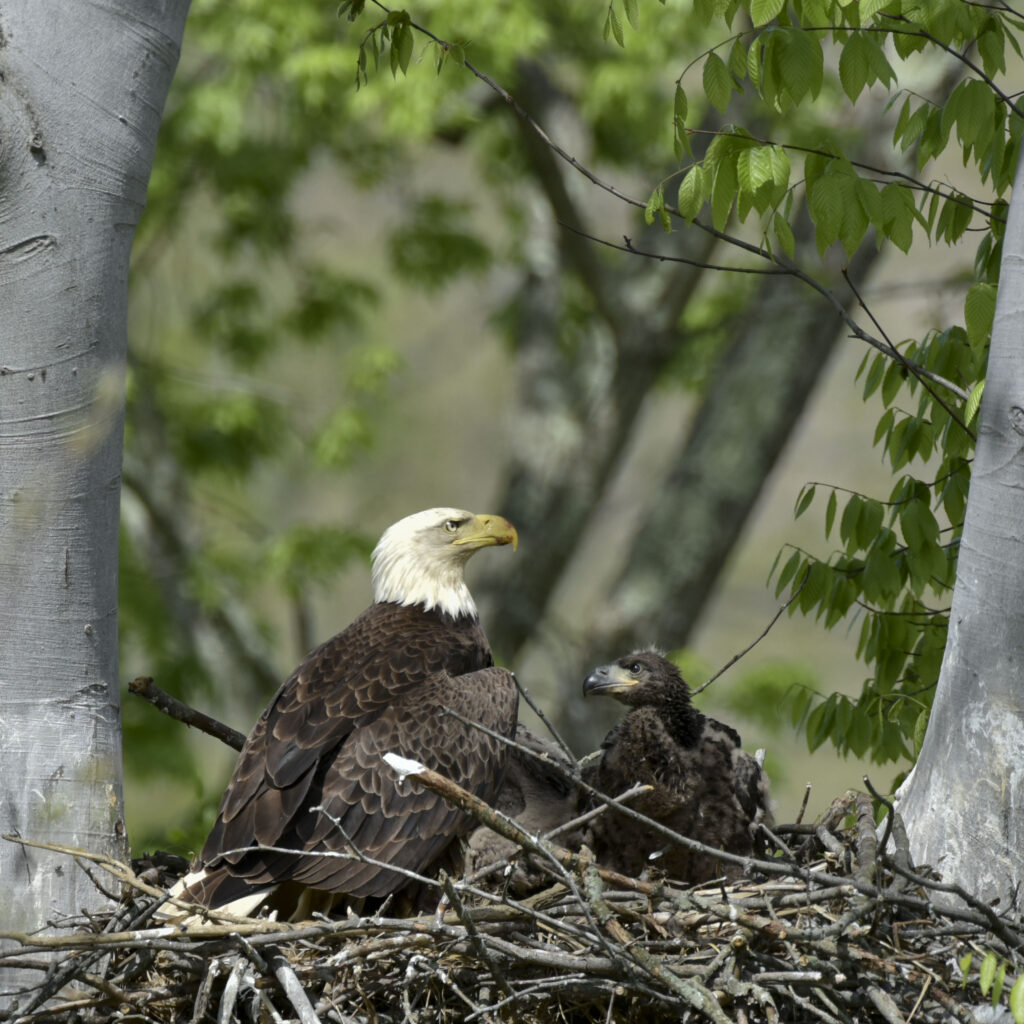Ohio’s Bald Eagle nesting season underway

A photo of a bald eagle nest at Magee Marsh Wildlife Area near Toledo is attached. ODNR photo.

Ohio’s Bald Eagle nesting season underway
| COLUMBUS, Ohio – Ohio’s resident adult bald eagles are already busy preparing for the next generation of eaglets, according to the Ohio Department of Natural Resources (ODNR). Female bald eagles in Ohio typically lay one to three eggs sometime in mid-February or late March. Eggs are incubated by both parents for about 35 days, and the young eagles leave the nest about three months later, usually before the Fourth of July.Although eagle sightings in the Buckeye State are more common today, bald eagles were once an endangered species. In 1979, there were just four bald eagle nests in Ohio. Thanks to partnerships between the ODNR Division of Wildlife, Ohio zoos, rehabilitation facilities and concerned landowners, bald eagle numbers began to climb. Bald eagles were removed from the federal list of threatened and endangered species in 2007 and from the Ohio listing in 2012. During the 2018 nesting season, ODNR Division of Wildlife biologists estimate that there were 286 eagle nests in the state, with mature eagles raising approximately 445 young eaglets.“I am proud of our agency’s restoration efforts to bring back this iconic symbol of our nation, and thrilled the population is thriving here,” said Kendra Wecker, chief of the ODNR Division of Wildlife. “Each time an eagle soars overhead, Ohioans have the opportunity to experience the natural beauty in our state. Nesting season is an exciting time, and I hope we can exceed 300 nests this year.” March is a fantastic time to get outdoors and view eagle nests, as the trees have yet to leaf out,providing the public great views of active eagle pairs. Bald eagles typically nest in large trees such as sycamores, oaks and cottonwoods near large bodies of water with an ample supply of fish, their preferred food. In Ohio, the western Lake Erie marsh region (Ottawa, Lucas, Erie and Sandusky counties) is home to a sizeable population of bald eagles. Excellent viewing opportunities can be found at Magee Marsh Wildlife Area, Pickerel Creek Wildlife Area, Ottawa National Wildlife Refuge, Mosquito Creek Wildlife Area and Killdeer Plains Wildlife Area. In the southern part of the state, eagles usually nest near major rivers such as the Muskingum, Hocking, Scioto and Great Miami. However, bald eagles can be found in nearly every county throughout the state, including urban settings. One famous pair resides just over 2 miles west of downtown Columbus along the Scioto River.Although bald eagles are no longer endangered, they are still protected under the federal Bald and Golden Eagle Protection Act. It is illegal to disturb bald eagles. When viewing these majestic birds, remember to respect the animal’s space and stay at least 100 yards away from the animal or nest. Disturbing bald eagles at the nest site could led the pair to abandon the eggs.As with many of Ohio’s native wildlife species, bald eagles require specific habitat conditions to thrive. Bald eagle habitat protection and research is funded by the sale of bald eagle conservation license plates, income tax check-off donations to the Endangered Species and Wildlife Diversity Fund and sales of the Ohio Wildlife Legacy Stamp. Learn how to support Ohio’s magnificent wildlife like the bald eagle at wildohio.gov/support. The mission of the ODNR Division of Wildlife is to conserve and improve fish and wildlife resources and their habitats for sustainable use and appreciation by all. Visit wildohio.gov to find out more.ODNR claims to ensure a balance between wise use and protection of our natural resources for the benefit of all. Visit the ODNR website at ohiodnr.gov. |








